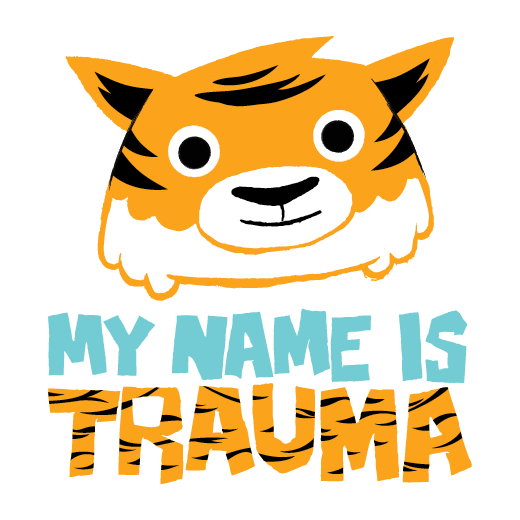What is Masking? Masking in Neurodivergent People
In the above image, a person smiles. Their grin is wide and their eyes are squinted. But pulled out of context, are they genuinely happy in the moment, or did they smile to make the people around them more comfortable? (Image provided by Unsplash)
Imagine you have a front facing job like a cashier at a clothing store, where it is part of your job to put on a smile, have a pleasant customer service voice, put your personal life aside and be ready to act professional and support complete strangers for several hours.
Now, imagine if you have to keep those ‘rules’ in your mind: how to dress, how to stand and smile and acknowledge you’re listening, how to maintain eye contact for nearly everyone you meet, for the majority of your social interactions whenever you leave the house, for the sake of blending in and getting along in your community. Sound exhausting? This is where we’ll dive in to what Masking is.
What is Masking?
Masking is, in a nutshell, performing neurotypicality and neurotypical behaviors, generally for the sake of ‘passing’ as neurotypical and to be accepted in the relationships and social settings around you. This has been called “social camouflaging” in academic research (see sources at the bottom of this page), though masking is a more common term.
Masking is not limited to Autistic people, but masking is prevalent among Autistic and other neurodivergent people.
Masking can be expressed in both conscious and unconscious behaviors, can be deliberately learned (like watching a movie and studying how characters talk to each other, so you can emulate the same gestures and scripts), or otherwise (being bullied or isolated for a way you acted, so you start to adapt and modify your behaviors when you are near specific people/situations)
Masking Stories
There are plenty of ways Masking occurs, and here’s a few sample anecdotes:
A late diagnosed autistic young man shared how his mom punished him for hand flapping (a common stimming behavior) as a child, saying it was not ‘normal’. He learned how to mask his body stims in the daytime with more socially acceptable forms, like gripping his hands together and picking at his nails, but at night would slap his hands on the floor of his bedroom for several minutes at a time, a habit that continued in his adulthood.
An adult shared how their desk job was hurting their legs. Their request for more breaks or for a walking pad to be added to their cubicle was laughed at and rejected. They resorted to clenching their leg muscles, chewing ballpoint pens until they broke, and walking for hours every day after work. Eventually, they were let go from the job for requesting accommodations in the first place and were no longer a “cultural fit”.
A child is raised with discipline such as “look at me when I’m talking to you”, and is taught to communicate with eye contact, but maintaining eye contact is exhausting, lowers their tolerance for stress throughout the day and affects their auditory processing.
A brain injury survivor couldn’t find a hair salon that was willing to do her haircut with the lights dimmed/off. To prepare for a haircut, she took pain medication, wore sunglasses until she was asked to remove them, would close her eyes and smile and hum in acknowledgement whenever her hairdresser spoke to her—but after the haircut, needed a taxi home as driving was too much energy, and spent the rest of the day lying in bed nursing her migraine pain.
A child may have had a big laugh and boisterous attitude in school, but as they got older were bulled by peers for being “hyper” or a “spaz”. That child over time learns to avoid bullying by softening their emotional reactions, becoming shy and avoidant, covering their mouth when laughing and suppressing strong emotional feelings throughout adolescence and adulthood.
An older female client is diagnosed with ASD later in life, because their concerns were considered ‘normal’ for women—their coping mechanisms and masking behaviors allowed them to pass as neurotypical, even though they suffered tremendous anxiety and distress on a regular basis.
Common Masking Behaviors
So what exactly do people do that would be considered Masking? If you’re neurotypical, a lot of these behaviors are things you may not think about in a given situation. Some of these are ‘automatic’, or otherwise don’t cost a lot of brain power for neurotypical people to do:
Eye contact with a conversation partner, moving eye contact between multiple people
Nodding, laughing at what someone else says, small gestures that convey you are listening and paying attention
Putting on a smile, avoiding a resting frown or a ‘flat affect’ face
Keeping true opinions to oneself so as not to seem ‘rude’ or ‘blunt’
Keeping conversations going, especially small talk
Temporarily putting on a different mood/personality
Avoiding stimming in public (avoiding pacing, avoiding picking at fingernails or face, avoiding using stim toys in front of others)
Adopting a multi-tonal voice (pitched up/positive when expressing happiness, pitched lower when asking a question or expressing confusion)
Avoiding or ignoring negative emotions/thought patterns/body sensations, hoping they will go away
For neurodivergent people, each of these masking behaviors can take deliberate thought and action to practice. As masking carries on to adulthood, it can feel impossible to shut off, and as a result, social interactions, and the outside world at large, becomes a more draining, exhausting experience.
Code Switching versus Masking
What makes Code Switching different from Masking? Plenty of neurotypical people also change their behaviors and actions in ways that are different from how they normally act. We may soften up and be more playful working with children, we may adopt a more mature and formal tone when interacting with a financial advisor at the bank. All of us put on our various ‘masks’ in places like work and school.
But the major difference is that Masking is trying to suppress or disguise traits that come naturally to you, for the comfort and acceptance of others—and this often comes with a heavy energy/cognitive/emotional toll.
You don’t HAVE to be smiling to feel happiness, and yet in therapeutic discourse, having a “flat affect” is often considered a negative thing.
You don’t HAVE to be maintaining eye contact to communicate with someone, and yet eye contact is a common concern that for some, is considered a necessary action to demonstrate you can communicate.
All of us may engage in adjusting our behavior to fit the context that we are in, but this is different from suppressing who you are for the sake of your own safety, or making others feel more comfortable, all the time nearly every day.
Masking is not the Goal
In much of pediatric therapy history, being “like other kids” was the goal therapists were given.
To play like other kids, to speak verbally like other kids, even in the mid-20th century, to write right-handed like other kids was a major concern. In its most egregious form, these approaches come from researchers or scholars who purport that ‘recovery’ from autism, or a ‘cure’ for neurodivergence is the goal. In present day, it would be unthinkable to try to train a child to write right-handed and to punish using their left hand. What is normal, anyway?
In today’s therapy world, concepts such as self-regulation, social skills, and behavior management remain important, but hiding or masking (without addressing the root causes) is not the goal. Support, acceptance, accommodation, and celebration sound pretty awesome in our opinion!
Now that you’ve read through this blog post (thank you!), take the time to think of past experiences where you’ve felt like you’ve had to change or modify yourself to belong—and know that at Qi Creative, your differences are awesome, worth celebrating, and worth supporting to live life in ways that are best for you.
WOOSH!
More Resources
What is Masking: A comic strip featured on Neuroclastic by Ra Vashtar
When Disability Is Defined by Behavior, Outcome Measures Should Not Promote “Passing” - An article by the AMA Journal of Ethics
ASAN Statement on Fein Study on Autism and “Recovery” - Autistic Self Advocacy Network
“Putting on my best normal”: social camouflaging in adults with autism spectrum conditions. - 2017 publication from the Journal of Autism and Developmental Disorders
“Having all of your internal resources exhausted beyond measure and being left with no clean-up crew”: defining autistic burnout - 2020 publication from Autism in Adulthood
Qi Talks OCD with Coach Taylor - Check out our podcast episode where Qi Creative Coach Taylor discusses her personal experiences growing up with OCD, and how both individuals and families may engage in masking to feign neurotypicality.






